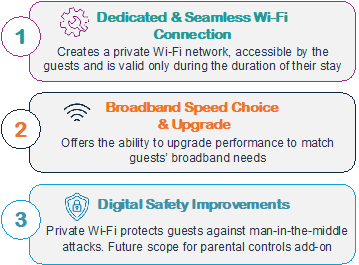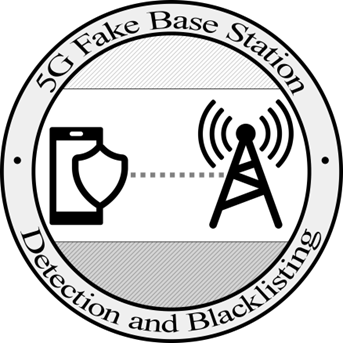Come check out our demonstrations on the Exhibit floor for a one-to-one demo in which you'll get a hands-on experience.
- Demo 1: WiThRay: 3D Ray-Tracing Simulator for Smart Wireless Environments
- Demo 2: Data-link prototyping in the upper mid-band (6-24 GHz) using Open Air Interface (OAI)
- Demo 3: The architecture of an Experimental CRAN Platform over CPRI
- Demo 4: Mapping business processes and creating system models with Generative AI
- Demo 5: Network as a Service - Featuring Traveller Wi-Fi
- Demo 6: Novel Network Configuration and Runtime Adaptation Methods for Industrial Wireless Sensor-Actuator Networks
- Demo 7: 5G Fake Base Station Detection and Blacklisting
- Demo 8: Use of Intelligent Signaling Networks for the Enhancement of 911 Emergency Services
- Demo 9: ARA PAWR: Wireless Living Lab for Smart an Connected Rural Communities
MONDAY, JUNE 10
Location: Plaza Exhibit / Foyer / Concourse Level
Time: 14:00 - 17:00
DEMO 1: WiThRay: 3D Ray-Tracing Simulator for Smart Wireless Environments
Sponsored by: 
Abstract: This demonstration at IEEE ICC 2024 will exhibit WiThRay's functionality through various simulated scenarios. Attendees will witness how different beamformers perform in real-time and observe the channel observations of multiple terminals. A key feature is the demonstration of time-correlation in channel changes as mobile terminals move, showing how the velocity of these terminals affects the performance of various techniques. Additionally, we will showcase the potential benefits of RIS, a topic of growing interest in the academic community. Our demo aims to provide concrete, simulated results, offering attendees a clear understanding of how WiThRay can be applied in real-world scenarios and its implications for future wireless communication developments.
DEMO 2: Data-link prototyping in the upper mid-band (6-24 GHz) using Open Air Interface (OAI)
Sponsored by: ![]()
Abstract: The NYU/Pi-Radio team will provide a live demonstration of a ‘private FR3 network’. Traffic such as iPerf and Youtube will be exchanged between an OAI-gNB and an OAI-UE passing through an OAI 5G core network. The OAI-gNB is composed of a powerful computer and a USRP N310 that connects to PiRadio’s FR3 front-end using SMA cables. Similarly, the OAI-UE runs on a powerful laptop and a USRP B210 that connects to Pi-Radio’s FR3 front-end using SMA cables. The OAI 5G core network is created using docker images on the same PC that runs the OAI-gNB.
DEMO 3: The architecture of an Experimental CRAN Platform over CPRI
Sponsored by:  and
and 
Abstract: In the demonstration, the Radio Equipment Controller (REC) (configured as Master node) and the Radio Equipment (RE) (configured as Slave node) are implemented on the Xilinx RFSoC platform. The Master-Slave configuration requires setting up the Xilinx CPRI IP in each device separately over the AXI registers. A fiber-optic connection is used as the fronthaul of this architecture. The OFDM data packet is transmitted to the Master by activating Block RAM through the PYNQ. After enabling the Block RAM, I/Q data is transmitted from the Master to the Slave via the CPRI IP, which is responsible for proper framing and synchronization. Subsequently, the CPRI-Slave receives the I/Q data, directs it to the DAC, and sends back the data from the ADC to the master. In the receive path, the ADC captures analog data from the DAC and converts it into digital samples after direct sampling and digital down-conversion. Consequently, the CPRI-Slave transmits this data to the Master, which can be stored for further processing using Direct Memory Access (DMA), either using the PYNQ or C/C++ in the PS or MATLAB in the host PC.
Tuesday, June 11
Location: Plaza Exhibit / Foyer / Concourse Level
Time: 14:00 - 17:00
DEMO 4: Mapping business processes and creating system models with Generative AI
Sponsored by: 
Abstract: The objective is to demonstrate how Generative AI can be utilized to create process models, data models and software architecture models. The only input required is a process description in natural language. During the demo we will showcase how we can create a business process diagram as well as development artefacts for engineers in less than 15 minutes by using Generative AI.
DEMO 5: Network as a Service - Featuring Traveller Wi-Fi
Sponsored by: CableLabs
Abstract: This demonstration will highlight the potential of Network as a Service and providing capabilities and services to the application layer beyond connectivity. Traveler Wi-Fi is just one of many use cases and new service offerings that can be enabled through exposing intent-based APIs to third party partners. The Traveler Wi-Fi use case targets hotels and short-term rentals by providing enhanced Wi-Fi experience for their guest upon arrival and throughout the duration of their stay.

DEMO 6: Novel Network Configuration and Runtime Adaptation Methods for Industrial Wireless Sensor-Actuator Networks
Sponsored by: 
Abstract: We will demonstrate the simulation-to-reality gap in wireless network configuration (identified in our experimental studies and reported in our paper published at NSDI’21). Because of this gap, the models for network configuration prediction learned from simulations cannot always help physical networks meet performance requirements. We will demonstrate our method that employs deep learning based domain adaptation to close the gap and leverages a teacher-student neural network to transfer the network configuration knowledge learned from a simulated network to its corresponding physical network (reported in our paper published at ACM Transactions on Networking in 2024). We will also demonstrate our method that leverages the data produced by multiple simulators to close the simulation gap (reported in a paper under review) as well as our meta-learning based solution to efficiently adapt the network configuration at runtime (reported in our paper published at IWQoS’23).
Wednesday, June 12
Location: Plaza Exhibit / Foyer / Concourse Level
Time: 14:00 - 17:00
DEMO 7: 5G Fake Base Station Detection and Blacklisting
Sponsored by: 
Abstract: To defend against the fake base station, we demonstrate a binary classification-based detection and blacklisting scheme at the user equipment that detects and blacklists the fake base station but not the faulty (but legitimate) base stations i.e. zero false positives. The faulty (but legitimate) base station can be caused by the lack of connectivity services at the time of the user equipment access, which are often temporary. For detection, the user equipment selects two threshold values (time duration and number of packets counter ) and tracks both the time duration starting from the initial Registration Request (T) and the number of Registration Request transmissions it repeats (N). If T exceeds and N exceeds then the user equipment detects the base station as fake and blacklists its cell ID. In this demonstration, our objective is to show the user equipment’s fake base station detection and blacklisting while varying base station operations (faulty, fake and legitimate) using software defined radios and open-source software srsRAN. We also show our selection of the optimal threshold values , so that fake base station detection error is minimum i.e. it only detects the fake base stations instead of faulty base stations.
DEMO 8: Use of Intelligent Signaling Networks for the Enhancement of 911 Emergency Services
Sponsored by: 
Abstract: The technology to be demonstrated gives telecommunications carriers the ability to detect and report outages that result in callers not being to reach 911. The technology operates through the use of Intelligent Signaling Networks carriers already have. The purpose of this presentation is four fold:
- First, to describe how Intelligent Signaling Networks in common use by carriers and service providers can be employed to produce outage information on an automated basis.
- Second, to illustrate how Intelligent Signaling Networks can serve as a “Check Engine” light to alert 911 providers and the FCC when a situation develops that warrants further investigation.
- Third, to illustrate how these equipment and processes help gauge the scope of carrier outages, as well as in many cases, pinpoint individual 911 callers including phone number, location, and other lifesaving information.
- Fourth, to present a live demonstration by means of two phone numbers, one in Washington DC and one in Hawaii. When dialed, an automated email Alert will be generated in real time, and sent using only Intelligent Signaling Network technology.
Any Party with an ex officio interest (carrier, service provider, 911/988 center, attorney, media or regulator) is invited to participate in the demonstration.
The demonstration generates an automated Alert simulating a 911 center experiencing an all-circuits busy condition. The two numbers to dial as well as instructions to participate in the demonstration are included in these Comments.
DEMO 9: ARA PAWR: Wireless Living Lab for Smart an Connected Rural Communities

Abstract: To demonstrate the example experiments enabled by ARA and to stimulate the research community participation, working on pressing problems in wireless communication systems, and applications. The demo will highlight example experiments and key results obtained through real-world deployment in the field showcasing the potential of ARA for advanced wireless innovation and applications.















